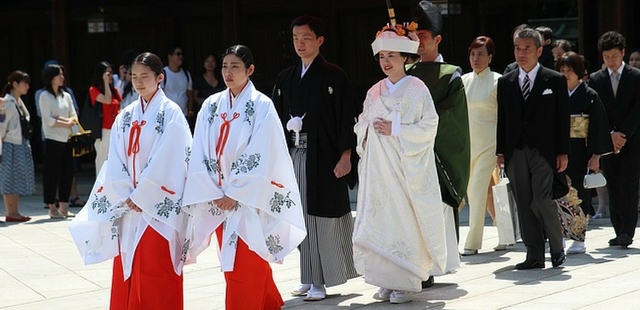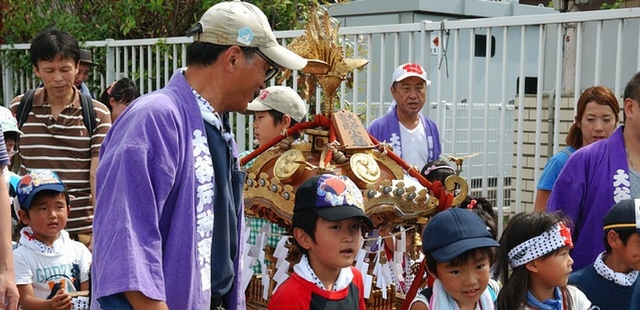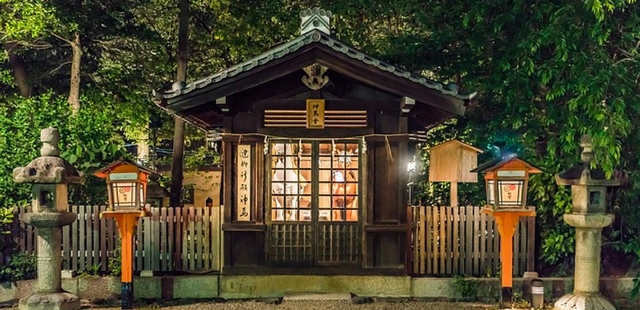Address
304 North Cardinal
St. Dorchester Center, MA 02124
Work Hours
Monday to Friday: 7AM - 7PM
Weekend: 10AM - 5PM
Address
304 North Cardinal
St. Dorchester Center, MA 02124
Work Hours
Monday to Friday: 7AM - 7PM
Weekend: 10AM - 5PM

One of the fundamental religion and one of the oldest in the country, Shinto shows an important respect of nature, family and ancestral traditions. At Shinto weddings, several rites have to be respected. After the rite of “Yuimono” where the groom comes to drink sake with his future wife in purpose to bound families, the couple and close families have to go to the sanctuary for purification and offerings to the gods (Kami). Kimono takes its importance at this moment.

The couple have to wear the traditional ceremony outfits. The bride has to wear the “shiromuku” which is a white kimono with symbols. The crane and lilies are a sign of happiness, that is why they are the most used symbols. The kimono comes in two forms, a thick model extending to the floor and composed of five layers, or a superposition of a dozen of thin and light kimonos.
The groom has only one choice: the traditional kimono which is usually in a dark blue color.
After sanctuary, the newlyweds have to offer gifts to their guests. This is one of the reasons for the extremely expensive cost of these ceremonies (in addition of kimonos).
Since a couple of years, Shinto weddings have been experienced many ups and downs. It was still widespread well into 1970s due to arranged weddings [called “Omiai”]. However, it was out of fashion later with a new preference for Western weddings. It made a return in the 2000s with several local celebrities who decided to get married in a traditional way bringing a renewed interest for the Japanese people.
Onsen is a hot natural spring outcome of volcanic sources and transformed into a bloodbath for spa. These famous baths, which are a real institution in Japan, are generally common and can be indoors or outdoors. Careful for modest people, nudity is generally required. The Yukata is worn before and after the bath.
It really has become over time a custom to travel in an onsen. We can almost talk about pilgrimage when Japanese visit a famous onsen. The best is to go to a Ryokan (a traditional Inn with a private spa).
Very important, onsen is not only used for relaxation. Onsen reputation also comes from the quality of water. Thanks to minerals, its volcanic sources show therapeutic virtues. They have the reputation to ease pain and heal many illness such as diabetes or skin diseases. Balneotherapy naturally appeared. Onsen-therapy should eliminate body malfunctions.
The Matsuri is a very popular and religious celebration (Shinto) which takes place in all localities of the country. First of all it is a way to honor the gods. And it is for this reason that Matsuri is held during important moments of the calendar as in spring when people celebrate rice transplantation. Or during summer to protect themselves from typhoons.

Some Matsuris are represented in the form of religious procession and are dedicated to the important deities such as “Amaterasu” the goddess of the sun, or to local deities. Many are those who try to climb mountains because many sanctuaries are established and it is an opportunity to practice religious ceremonies and meditation.
The buddhist matsuri called Obon (more than 500 years old) takes place in summer during the month of ghosts. It allows people to go to their hometown and to honor their ancestors (their spirit is allowed to go back to earth those days). They are responsible to give offerings to the spirits in order to reduce their pain.
When you decide to go for a walk in traditional Japan, you have more opportunities to see kimonos. Indeed, some parts of the country have kept all the folklore and traditions like nowhere else. This is the case of Gion district.
Gion (today filed largely in the historical heritage, is a Kyoto district which was created for travelers and people interested in visiting adjacent Yasaka sanctuary. This Shinto shrine erected in 656 was rebuilt between 1654 and 1664 in purpose to be dedicated to “Kami Susa-no-o” the God of sea.

Today Gion is known for keeping its traditional architecture. Its “machiya” houses and r”ochaya” tea houses have kept all theur original beauty thanks to repairs organised by the city of Kyoto. The neighborhood is also famous for its Geishas (called Geiko in Gion). You can admire them with traditional clothes during the night but also during the day.